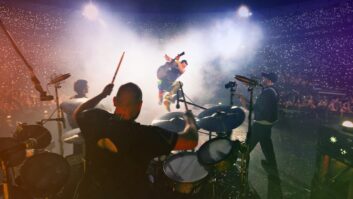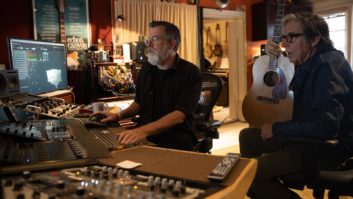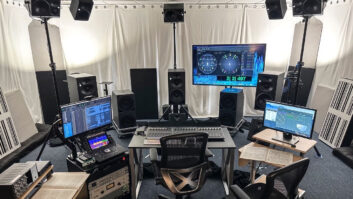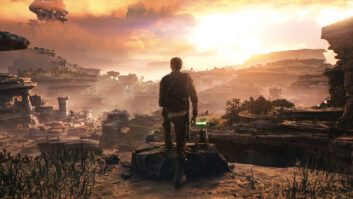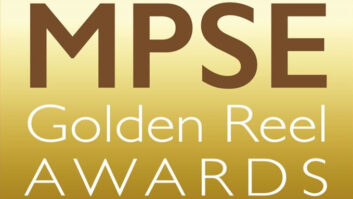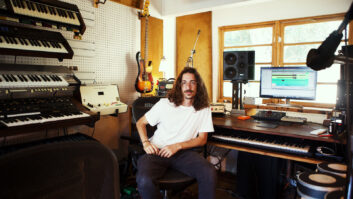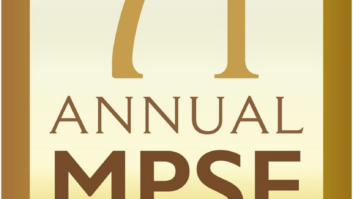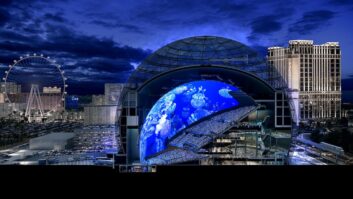Silverback Films chose a bold direction for its eight-part nature series Our Planet on Netflix. Instead of a veiled message of conservation, the filmmakers made a frank statement: Here is our planet and this is the impact humans are having on it. The beauty of exotic biomes and amusingly eccentric bird courtship displays are juxtaposed with sobering sequences, like 75 million tons of glacial ice falling into the sea or a community of walruses falling to their deaths from rocky cliffs they were forced to climb due to a lack of sea ice on which to rest.
The walrus death scene in the “Frozen Worlds” episode is a particularly harrowing moment that Oscar-winning composer Steven Price captures poignantly with his score. It even moved the well-disciplined musicians of the London Philharmonic Orchestra to tears. Behind the conductor in the studio at Abbey Road, there was a large screen playing each episode while the musicians were performing.
Seeing the footage “seemed to bring out a bit of character in their performance,” Price says. “On that sequence, the music builds and builds until the first walrus falls over the edge; then it stops. It was the very first time the orchestra had played it, and you got a sense that they were playing but also watching. The musicians would never react to something, but there were gasps and tears. It became obvious that this was a sequence that had a lot of power to it.”
For the glacial ice sequence in the “One Planet” episode, Price didn’t choose the typical route of big moment/big music. It may be one of the biggest scenes in the show but it’s also one of the quietest. “The challenge was to create a track that felt more personal. It’s just a piano and a solo violin. It’s almost a lament for what you’re seeing,” says Price. “I am most proud of the moments where we’ve taken something on an epic scale and brought it down to a more personal one. The hope is that the show has an impact on individuals and it starts that conversation about what can be done to solve the problems that we are facing.”
Price is best known for his multi-award winning original score on director Alfonso Cuarón’s Gravity, which earned over 10 awards including an Oscar, BAFTA and ASCAP. He’s also won a BAFTA TV Craft Award for his score on The Hunt—another nature docu-series produced by Silverback Films. Price also recently scored the upcoming Dolphin Reef documentary produced by Disneynature and directed by Silverback Films co-founder Keith Scholey.
Price’s goal on Our Planet was to bring out the emotion of the sequences; having the orchestra perform to picture helped to set the right mood. “Because the colors of each episode are so different, it always felt like the music needed to sound different. With the ‘Frozen Worlds’ episode, people were playing with less vibrato, and it was a much colder sound,” he says.
Also, with picture and orchestra together, it was easier for Price to communicate his creative intent for each piece. He could point to the image and say, “I’m trying to get the sense that the snow is washing across the tundra.” The musicians could see that and react to it. Price says, “We felt that we were very much making the film together, which hopefully makes an emotional difference.”
The picture provided inspiration every step of the way, from the first written notes to the final recorded performance. And since Price was working with (mostly) locked picture and a guide track of narration and effects, he knew when he could go big and when to make room for important dialog and effects-driven moments. “I could be brave with the writing,” he says. “I could really commit and hit a scene hard or build up a moment and be accurate with what I was doing.”
Price found that certain instruments seemed to fit naturally with certain biomes, like woodwinds for the “Forests” episode, guitars for “Coastal Seas,” and synth elements reminiscent of the glacial sounds in “Frozen Worlds.” Overall, the score is orchestral-based, but each episode “led me to use a different section of it and to supplement it in different ways,” he explains. “It was always interesting to start an episode, to experiment with different elements to find what felt right.”
For the butterfly sequence in the “From Deserts and Grasslands” episode, Price created fluttery flutes by recording them separate from the orchestra, running them through an Echoplex delay pedal and recording that back into Pro Tools. He also added some reversed acoustic guitar parts. “As things fluttered and came out of their chrysalis, I was able to play with the sound a bit to make it feel like something was emerging,” he says.
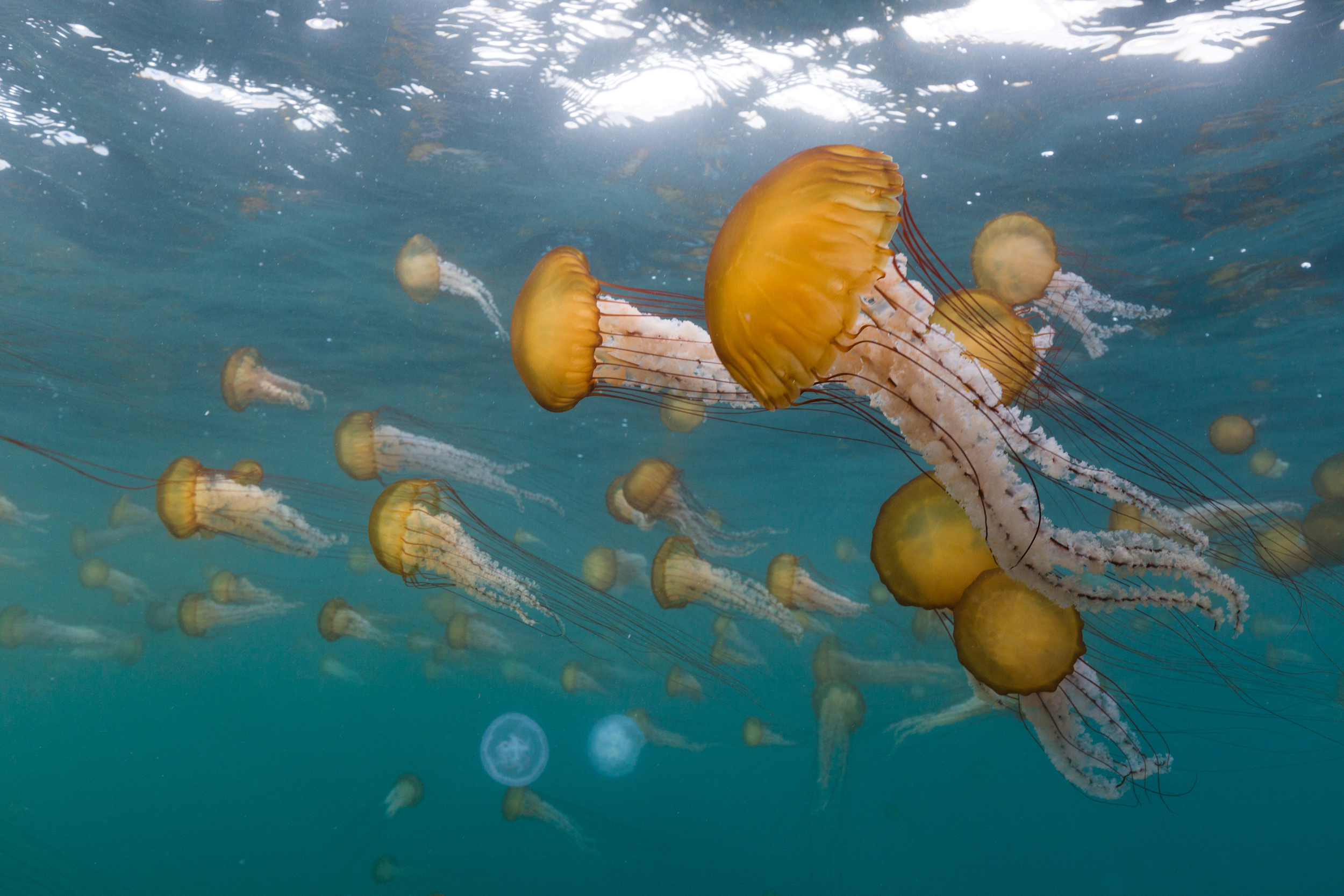
In the “Coastal Seas” episode, Price’s inspiration for the jellyfish was a fretless guitar by Vigier Guitars that has a metal fingerboard. “You can glide all around on it and it makes this echo-y sound,” he explains. “The guitar had just arrived as I was starting on the jellyfish sequence. When I saw the images of them swirling around, those two just locked together. The guitar created this weird, swelling sound that just fit.”
For “Coastal Seas” and “High Seas,” Price used choral voices. It’s a fitting choice, like making a connection between the oceans and the Sirens of Greek mythology. “High Seas” features a small choir that works well with that vast biome, but “Coastal Seas” is more intimate, so Price chose a single voice—that of singer Lisa Hannigan. “She has the most glorious voice,” Price says. “I’ve worked with her often enough that I know what she can do. The vocal line for the coral sequence in ‘Coastal Seas’ was very much written with her in mind.”
The series isn’t always serious. For instance, Price did a bit of whistling for the leaf cutter ants’ music in “Jungles.” He says, “Whistling is a funny thing, it turns out. My whistling isn’t quite in tune, but when we tried to put it in tune, it suddenly sounded awful! So there’s a load of out-of-tune whistling that somehow comes together in the final track. We did a lot of EQ to remove the sound of me blowing and missing notes. But, hopefully, it has a sort of rough-edged charm.”
Also in the “Jungles” episode, Price had to compose lively dance music for the western parotia’s courtship display. The music had to match the timing of the bird’s dance moves precisely, as well as have character and charm.
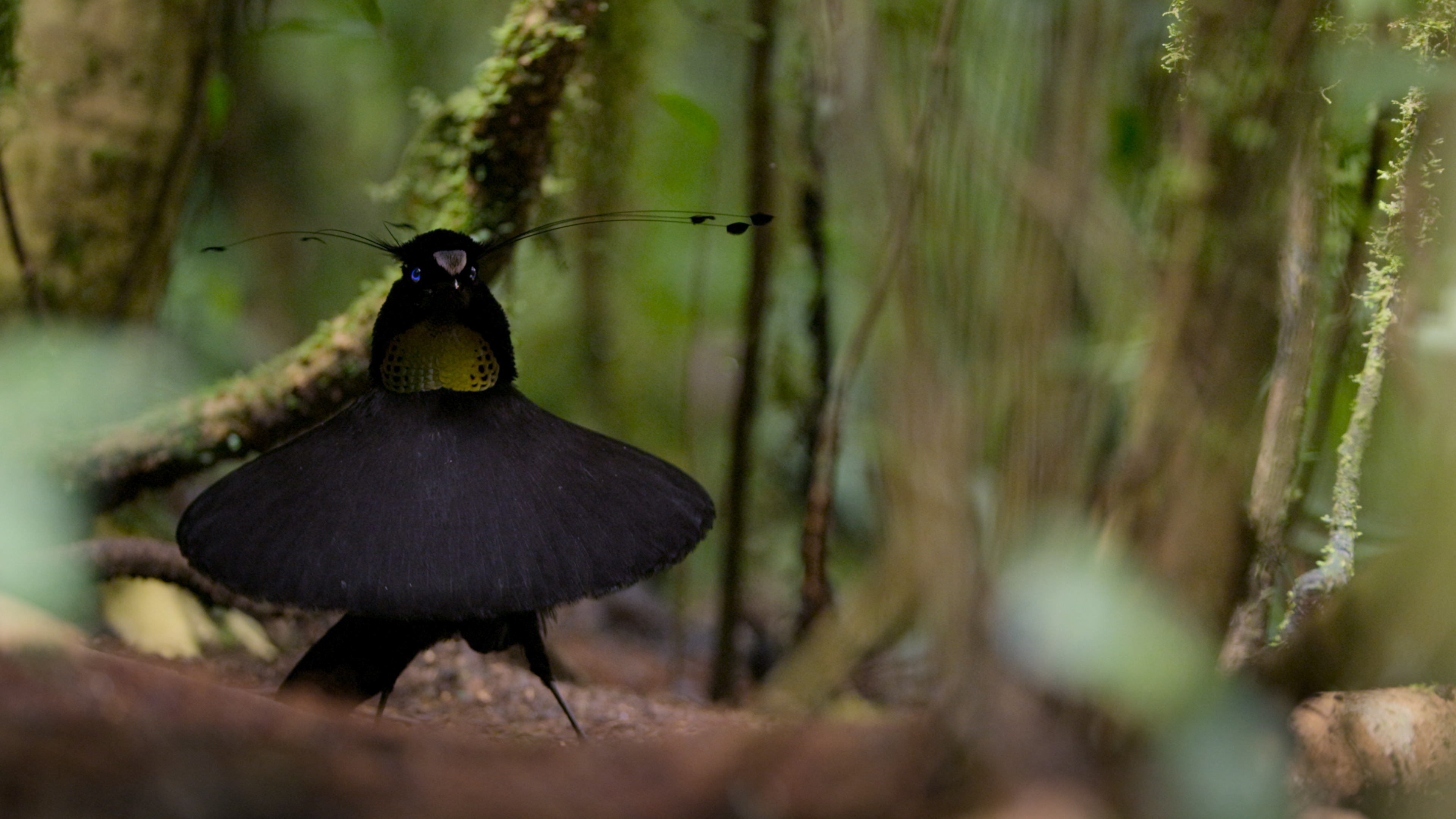
“It’s really specific and frame-accurate. It required me to build a tempo map, which is a bit tricky,” shares Price. “It’s more of a band piece, so there are quite a lot of guitars. Luckily our bass player in the orchestra was handy with a plucked double bass, so we got him to do a pass on that. Our trumpet player really launched himself at it and it made the whole thing work. There’s also a bit of Hammond organ and some extra percussion that I recorded at my studio. Those bits helped it to come alive a little. It was a fun challenge.”
With only nine months to get through eight 60-minute episodes, Price often found himself working double duty. He’d start by writing an episode’s score in his London-based studio using virtual instruments in a Pro Tools session. “My template is set up for 5.1 because I like to do textural work that goes into the surrounds,” Price notes. “As I’m writing, it’s nice to work out where that would be spatially. On Our Planet, you have these immersive environments on-screen, like the ocean scenes, and I’m working out how to help those feel more immersive with the music. That was a real intrinsic part of writing this score.”
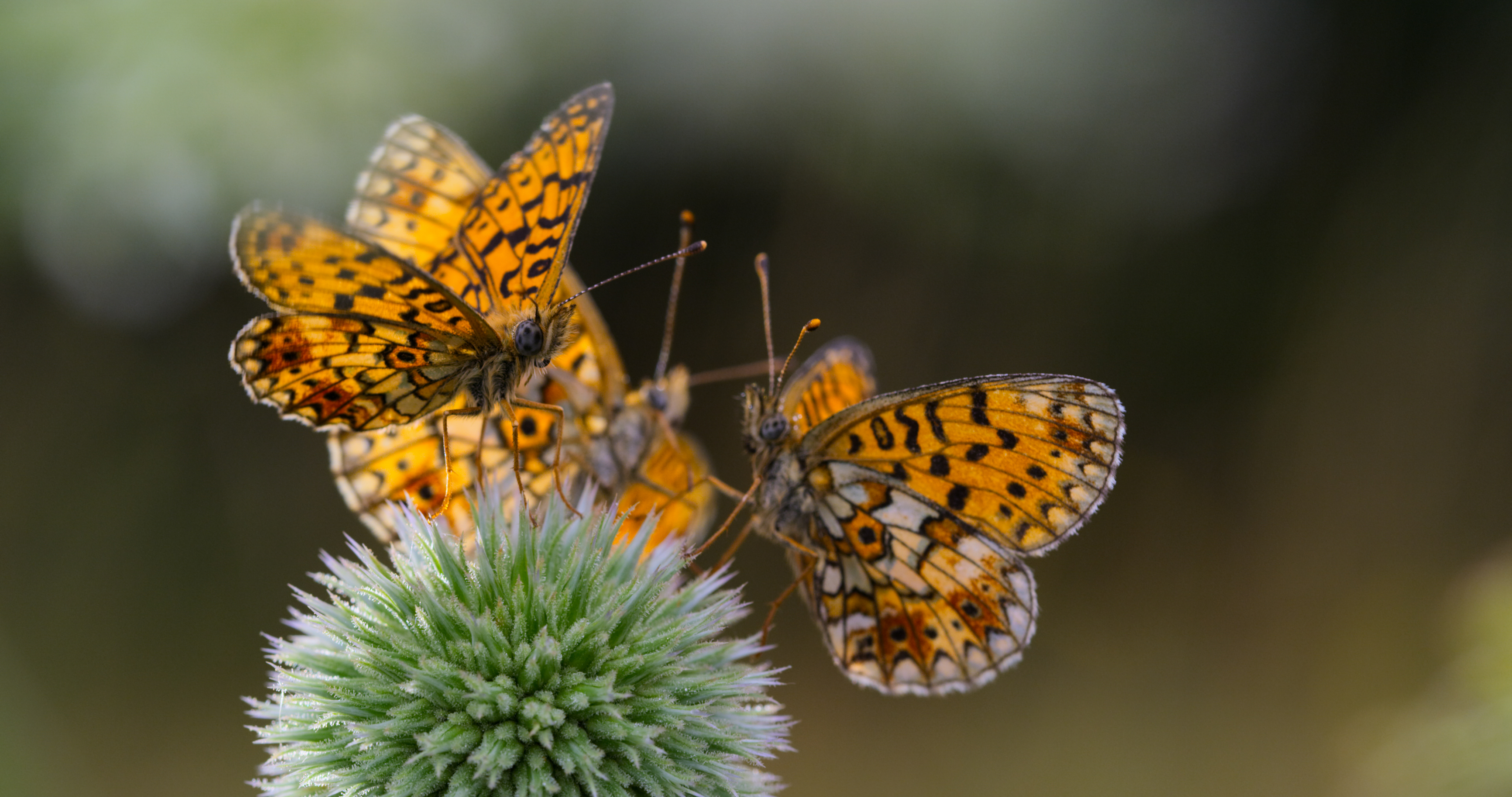
Next, he’d play the episode’s score for the filmmakers and address all their notes and tweaks. Then, he’d tap orchestrator David Butterworth, who would translate the MIDI files in the Pro Tools session into parts for the orchestra. Before heading to Abbey Road Studios to record, “we’d very carefully go through the orchestrations with a fine-tooth comb to make sure that everything was exactly as intended. Mistakes can really slow you down in a session,” says Price. “The orchestral recording was all done in a single 10-hour day for each episode. It was intense. We were getting through 45 to 50 minutes of music, so everything had to run very smoothly.”
At the session, the best takes were edited together by Price’s assistant Bradley Farmer, who combined them with any final pre-recorded material that Price had already done.
Those tracks were handed over to re-recording mixer Gareth Cousins. “Since there was such a limited budget, Gareth would mix at his place and then pass the session down to me and I would do a bit and pass it back to him. We have matching Pro Tools rigs, so we can just pass a file between us with no trouble,” says Price.
While that was happening, Price was writing for the next episode and Butterworth was working on the orchestrations for the upcoming recording session. He says, “At times, I was flitting between three episodes. Our goal always was to keep the score to a feature film standard. We were recording the equivalent of a film score every month.”
Ultimately, they delivered stems to the dub stage and the re-recording mixer spread those around the Dolby Atmos surround field. The Cousins/Price mix in 5.1 was also downmixed to stereo for the show’s OST released by Decca Records/Universal Music, which was mastered by Simon Gibson at Abbey Road.
Price concludes, “This was an intense but brilliant process, being given these amazing images and stories and trying to tie it all together.”
